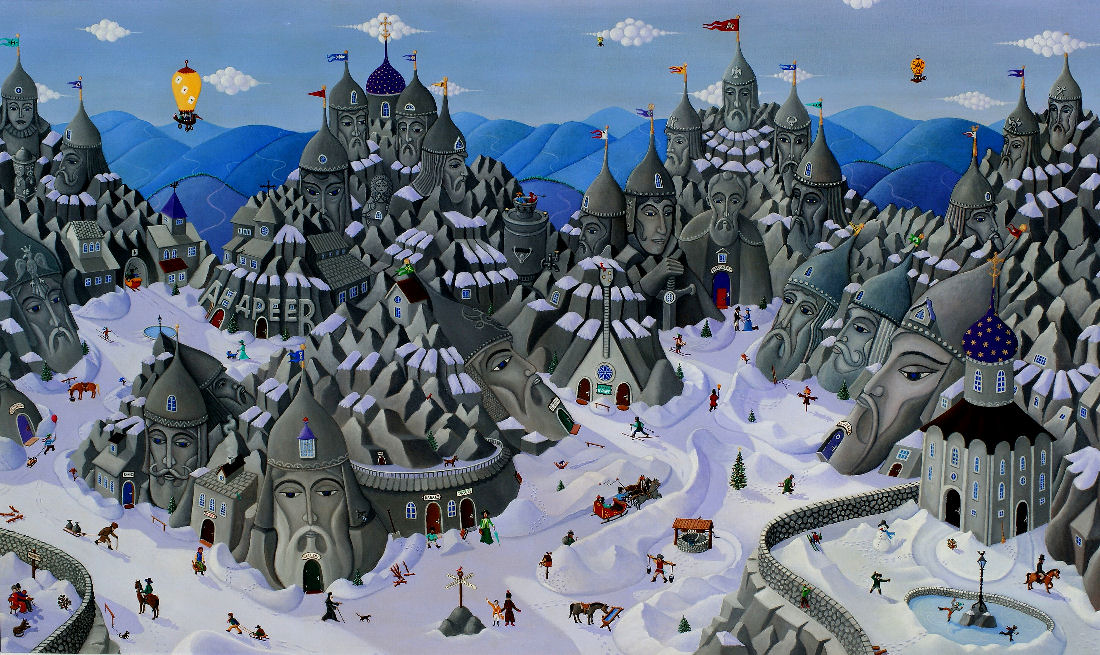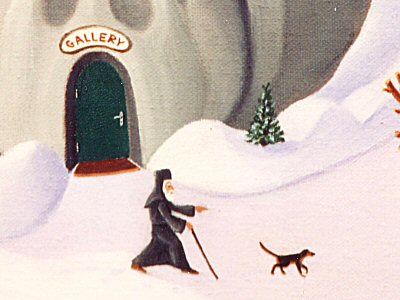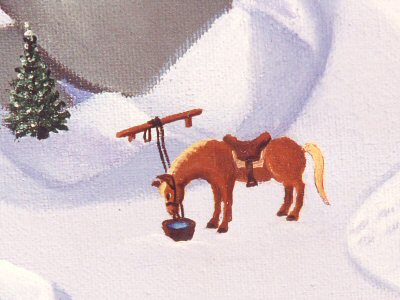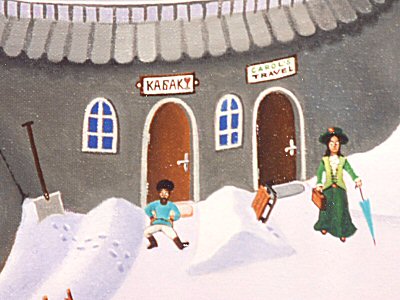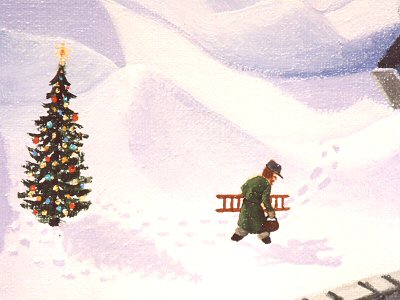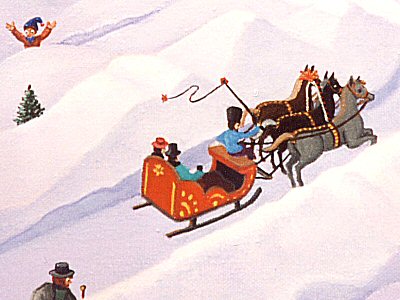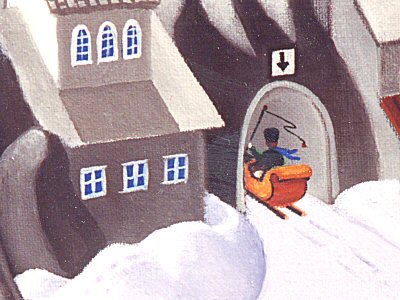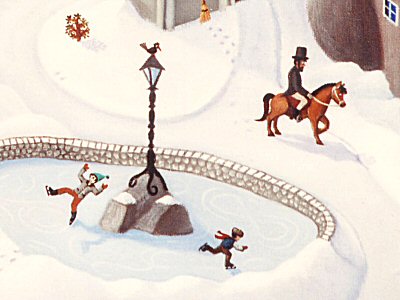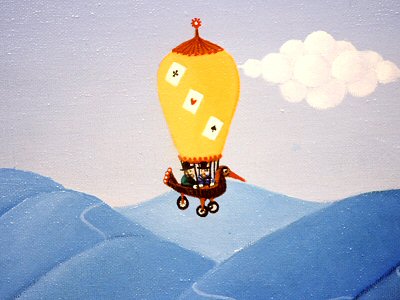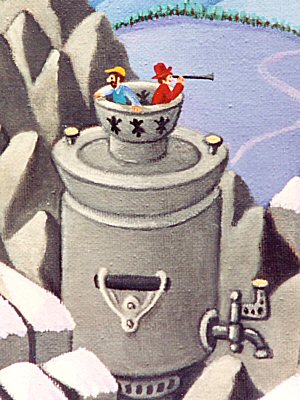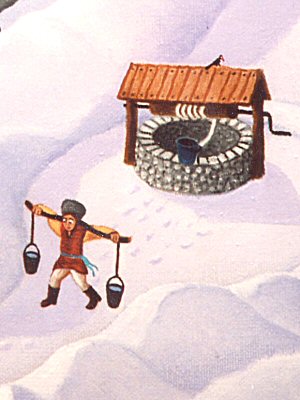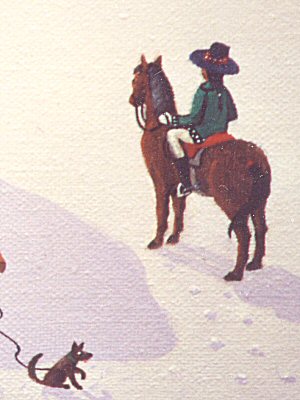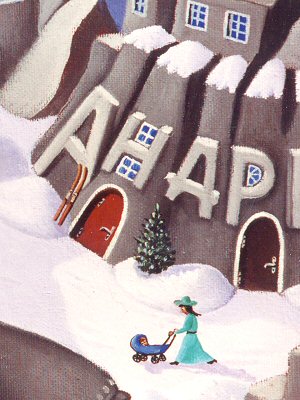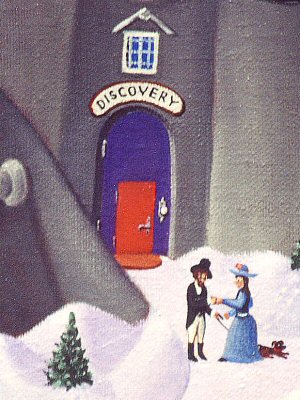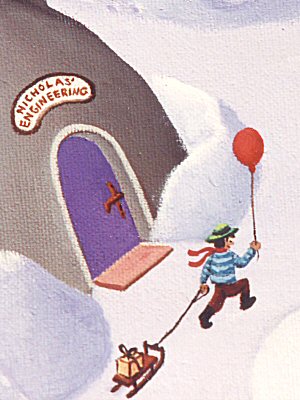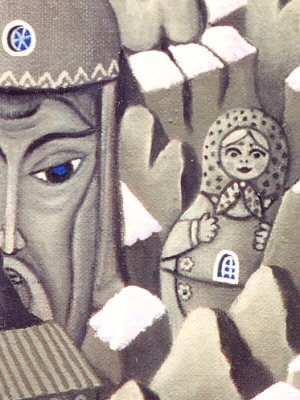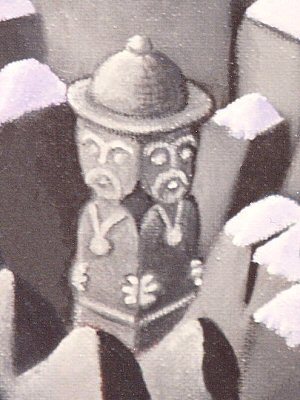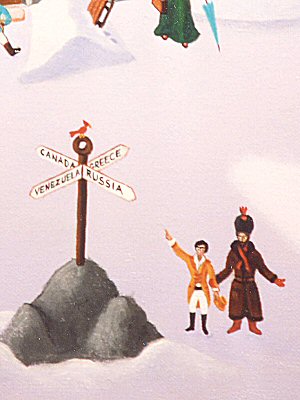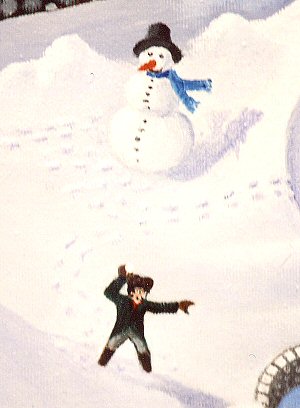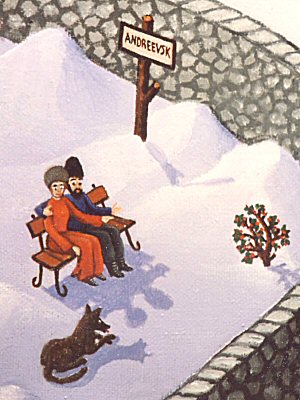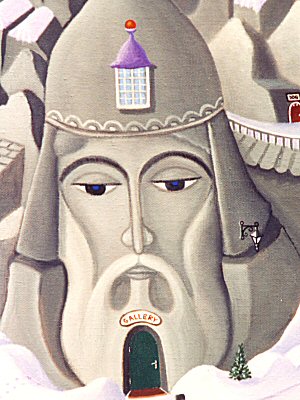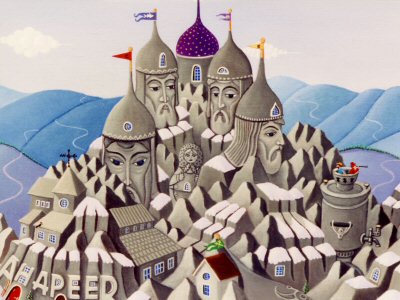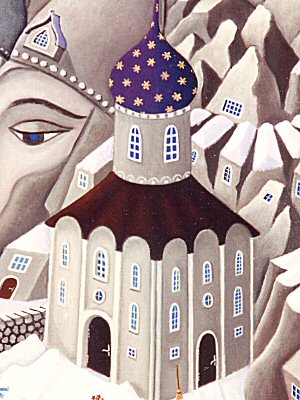ANDREEVSK IN WINTER
Oil on canvas, 60 x
36 inches,
1992
(Private collection,
Lake Forest, Florida)
This imaginary world was created for a Russian-born collector, whose
heritage prompted him to master the balalaika. Besides incorporating elements of Russian culture, more wide-ranging aspects of his and his wife's lives, interests, and travels are subtly referenced in the painting. The concept
of the painting developed slowly, starting with the idea that from a distance
churches in many old Russian cities looked like helmets of Russian
warriors. A crucial step in the composition and the character of the
painting was the decision that the town depicted on this large canvas will be
shown in the winter. Painting a winter landscape presented many
challenges, especially sacrificing of favorite colors used in other
paintings, particularly green and brown. Instead, many details in the
painting feature all the colors; however, the overall tone of the work remains
cool and soothing. Another challenge presented by the painting was the rendition of
snow, which, as anyone who has ever painted snow knows, is never white; in
this rendition it is white with purplish shadows. Among the most apparent
Russian things in the painting, besides the church and the houses shaped like
warriors, are: the balalaika, a traditional Russian three-stringed instrument; a
Matryoshka nesting doll, one of the most popular souvenirs from Russia; a
samovar, a traditional tea pot also characteristic of Russian life before the
Revolution; a four-faced statue of a pagan idol, representing the pagan beliefs
of the Russians before they were Christianized in 988; and a troika, a sled
drawn by three horses, also symbolic of life in Old Russia and of winter
celebrations in particular.
Return to Index
